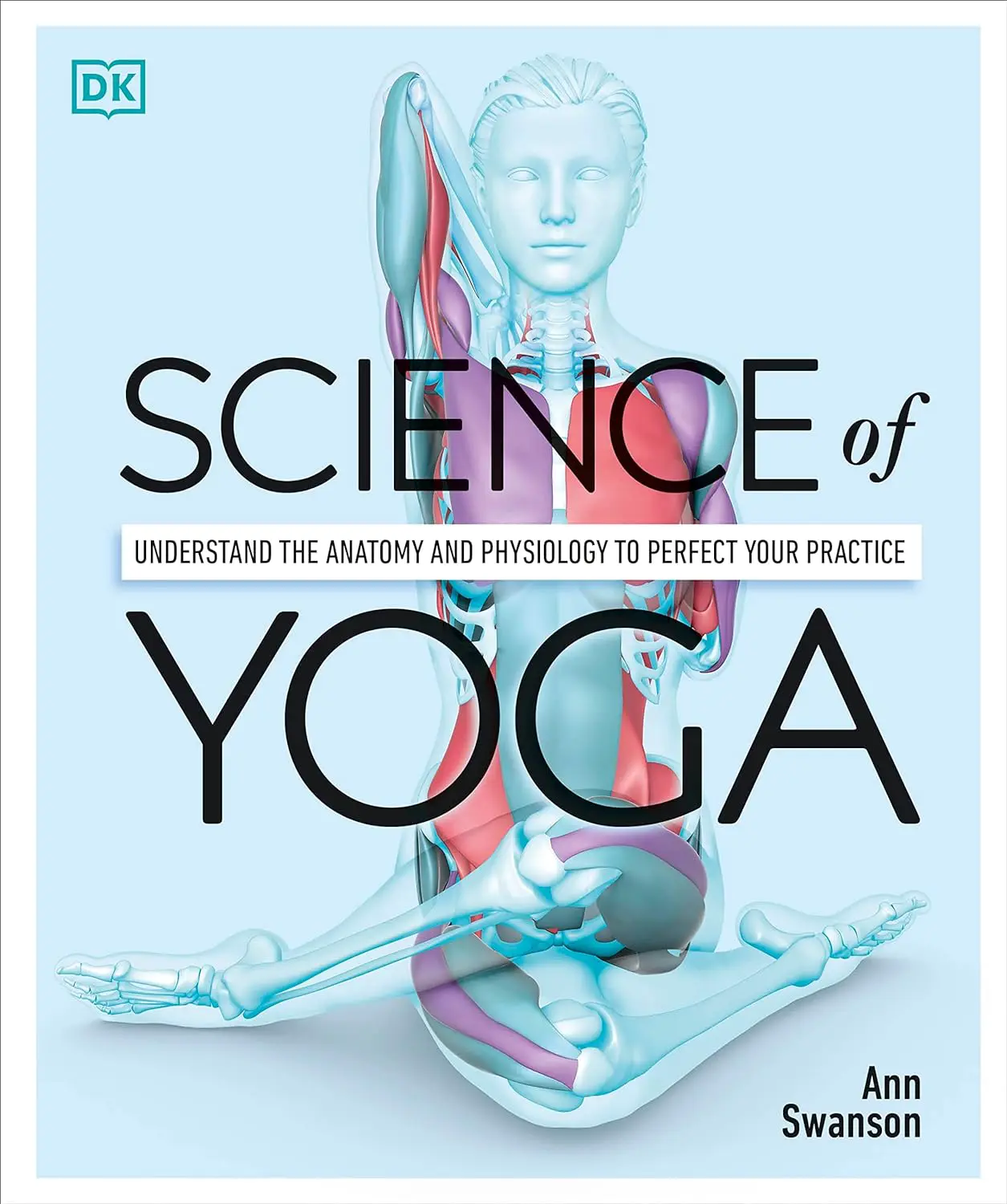Mystical Pranayama: Divine Breath Control

Looking for more amazing products? Check out our online store and explore our collection here! Happy shopping!
Before diving in, please note: This post is for informational purposes only. If you’d like to know more about how we approach topics, feel free to check out our friendly Disclaimer Page.
Hey there, amazing readers! 
We’re committed to delivering quality posts, and your support (even just sticking around despite the ads) means everything to us. So, bear with us, and thanks for helping us keep the good vibes rolling. Now, on to the fun stuff!
TRANSLATE BUTTON AT THE END OF THE ARTICLE
Introduction to Pranayama Practice
Pranayama, often referred to as the ancient art of breath control, is a powerful practice that goes beyond just regulating our breath; it delves into the mystical realm of connecting with the divine through conscious breathing techniques.
The word "pranayama" is derived from two Sanskrit words: "prana," meaning life force, and "ayama," meaning extension or expansion.
By mastering pranayama, individuals can tap into the unlimited potential of their life force energy, promoting overall well-being, physical health, mental clarity, and spiritual growth.
While pranayama is a fundamental aspect of yoga, it can also be practiced on its own to harness the transformative power of the breath.
By exploring the depths of pranayama, one can unveil the secrets of their inner self and cultivate a deeper connection with the divine.
This mystical practice has been revered for centuries for its ability to unlock hidden energies within the body and elevate consciousness to higher states of awareness.
As we delve deeper into the mystical world of pranayama, it becomes evident that this practice is not merely about controlling the breath; it is a pathway to self-discovery, inner peace, and spiritual enlightenment.
Through dedicated practice and unwavering focus, individuals can unlock the true potential of their breath and harness its divine power to transform their lives in profound ways.
Understanding the Mystical Power of Breath
The breath is a powerful force that sustains life and is intricately connected to our physical, mental, and emotional well-being.
In many spiritual traditions, the breath is seen as a bridge between the physical and spiritual realms, a conduit through which we can access higher states of consciousness and transcendental experiences.
Through the practice of pranayama, individuals can harness the mystical power of breath to purify the body, calm the mind, and expand their awareness beyond the limitations of the ego.
By becoming aware of the breath and learning to control its flow, practitioners of pranayama can tap into the subtle energies that underpin all of existence.
The breath is not just oxygen entering and exiting the body; it is a vital force that carries with it the essence of life itself.
Through mindfulness and concentration, individuals can transform their breathing patterns and access deeper layers of their being, unlocking hidden potentials and experiencing profound states of bliss and tranquility.
Pranayama teaches us to navigate the complexities of our inner landscape with grace and ease, guiding us towards a deeper understanding of ourselves and our place in the universe.
By harnessing the mystical power of breath, we can unravel the secrets of our existence and connect with the divine source that resides within us all.
Through dedicated practice and reverence for the breath, we can tap into the limitless reservoir of energy that flows through us, transforming our lives in ways we never thought possible.
Benefits of Divine Breath Control
The practice of pranayama offers a myriad of benefits for the body, mind, and spirit.
By mastering the art of breath control, individuals can experience profound changes in their physical health, mental clarity, emotional well-being, and spiritual growth.
Some of the key benefits of pranayama include:
Stress reduction: Pranayama techniques help calm the nervous system, reduce stress levels, and promote a sense of inner peace and relaxation.
Improved lung capacity: By expanding and contracting the lungs through various breathing exercises, individuals can increase their lung capacity and improve overall respiratory function.
Enhanced focus and concentration: Practicing pranayama cultivates mental clarity, sharpens focus, and improves concentration levels, making it easier to engage in tasks with presence and awareness.
Balanced energy levels: By regulating the flow of prana within the body, pranayama helps balance the energy centers (chakras) and promotes a harmonious distribution of life force energy throughout the system.
Increased vitality: Through the practice of pranayama, individuals can revitalize their body, mind, and spirit, boosting energy levels and promoting overall well-being.
By incorporating pranayama into their daily routine, individuals can experience a wide range of benefits that extend far beyond the physical realm.
The divine breath control techniques of pranayama have the power to transform lives, awaken inner potentials, and connect practitioners with the limitless wellspring of energy that flows through the universe.
History and Origins of Pranayama
The history of pranayama dates back thousands of years to ancient India, where it was first mentioned in the Vedas, the oldest sacred texts of Hinduism.
The practice of pranayama was integral to the early yogic traditions, where it was used as a means of purifying the body, calming the mind, and preparing for deep states of meditation.
Over time, pranayama evolved into a sophisticated system of breath control techniques that were passed down through oral tradition and eventually recorded in yogic texts such as the Yoga Sutras of Patanjali.
The origins of pranayama can be traced to the concept of prana, the vital life force that animates all living beings.
In ancient Indian philosophy, prana is believed to be the subtle energy that underpins the physical body and connects individuals to the universal life force.
By harnessing the power of prana through breath control practices, yogis sought to purify the body, balance the mind, and awaken spiritual consciousness.
Throughout the centuries, pranayama has been an integral part of yogic practices, meditation techniques, and spiritual rituals in various traditions around the world.
From the ancient sages of India to the modern practitioners of yoga, the mystical power of breath control has been revered as a potent tool for self-realization, healing, and transformation.
Today, pranayama continues to be a cornerstone of the yoga tradition, offering seekers a pathway to inner peace, self-discovery, and divine connection.
Techniques for Mastering Pranayama
Pranayama encompasses a wide range of breathing techniques that vary in complexity and purpose, each designed to enhance specific aspects of the individual’s physical, mental, and spiritual well-being.
While there are numerous pranayama techniques, some of the most common and effective ones include:
Deep breathing (Diaphragmatic breathing): This foundational technique focuses on breathing deeply into the abdomen, expanding the diaphragm, and filling the lungs with air to increase oxygen levels in the body and promote relaxation.
Alternate Nostril Breathing (Nadi Shodhana): A balancing technique that involves breathing through one nostril at a time to harmonize the flow of prana in the body, calm the mind, and balance the energy centers.
Ujjayi Breathing (Victorious Breath): A powerful technique that involves constricting the back of the throat to create a subtle oceanic sound while breathing, promoting focus, concentration, and inner awareness.
Kapalabhati (Skull Shining Breath): A cleansing and energizing technique that involves rapid forceful exhalations followed by passive inhalations to purify the lungs, energize the body, and clear the mind.
By exploring different pranayama techniques and gradually mastering the art of breath control, individuals can tailor their practice to suit their specific needs and goals.
Whether seeking relaxation, mental clarity, or spiritual growth, there is a pranayama technique that can help unlock the secrets of the breath and transform one’s life in profound ways.
Connecting with the Divine Through Breath
One of the most profound aspects of pranayama is its ability to connect individuals with the divine source of all creation through the breath.
In many spiritual traditions, the act of breathing is seen as a sacred practice that bridges the gap between the physical and spiritual realms, allowing practitioners to access higher states of consciousness and divine wisdom.
By harnessing the mystical power of breath, individuals can deepen their connection with the universal life force energy and experience a sense of oneness with the cosmos.
Through dedicated pranayama practice, individuals can cultivate a profound sense of inner peace, harmony, and spiritual awareness.
By focusing on the breath and channeling the flow of prana within the body, practitioners can awaken dormant energies, expand their consciousness, and tap into the limitless potential of their being.
The divine breath control techniques of pranayama serve as a powerful tool for self-realization, transformation, and connection to the divine essence that resides within us all.
As individuals deepen their pranayama practice and become more attuned to the subtle energies of the breath, they can experience profound states of bliss, tranquility, and unity with the universe.
By surrendering to the flow of the breath and embracing the divine presence within, practitioners can unlock the secrets of their innermost selves and connect with the boundless beauty and wisdom of the cosmos.
The Science Behind Pranayama
While pranayama is deeply rooted in spiritual tradition and mysticism, there is also a growing body of scientific research that supports the benefits of breath control practices on physical and mental health.
Studies have shown that pranayama techniques can have a profound impact on the autonomic nervous system, promoting relaxation, reducing stress levels, and improving overall well-being.
By focusing on the breath and regulating its flow, individuals can activate the body’s relaxation response, lower blood pressure, and enhance feelings of calm and peace.
Pranayama has also been shown to have a positive impact on cognitive function, memory, and mental clarity.
By engaging in deep, rhythmic breathing practices, individuals can oxygenate the brain, improve focus and concentration, and enhance cognitive performance.
The controlled breathing patterns of pranayama stimulate the parasympathetic nervous system, which is responsible for rest and digest functions, promoting a sense of relaxation and mental clarity.
In addition to its effects on the nervous system and cognitive function, pranayama has been found to have a profound impact on emotional well-being and mood regulation.
By practicing breath control techniques, individuals can reduce symptoms of anxiety, depression, and other mood disorders, leading to a greater sense of emotional balance and resilience.
The science behind pranayama continues to uncover the myriad ways in which conscious breathing practices can positively impact physical, mental, and emotional health, validating the ancient wisdom of this mystical practice.
Common Misconceptions About Pranayama
Despite the numerous benefits and profound effects of pranayama, there are several common misconceptions about this mystical practice that may dissuade individuals from exploring its transformative power.
Some of the most prevalent misconceptions about pranayama include:
Pranayama is only for advanced yogis: While pranayama is an integral part of advanced yoga practice, it can be adapted and practiced by individuals of all levels, from beginners to experienced practitioners.
Breathing exercises are simple and easy: Pranayama techniques require concentration, mindfulness, and dedicated practice to master, and may not be as simple or easy as they appear.
Pranayama is only about breath control: While breath control is a central aspect of pranayama, this mystical practice goes beyond just regulating the breath; it encompasses a holistic approach to physical, mental, and spiritual well-being.
By dispelling these common misconceptions and approaching pranayama with an open mind and heart, individuals can unlock the transformative power of this ancient practice and experience its profound effects on their lives.
Incorporating Pranayama Into Daily Life
Integrating pranayama into one’s daily routine is a powerful way to cultivate mindfulness, enhance well-being, and deepen one’s connection with the divine.
By setting aside dedicated time each day for pranayama practice, individuals can reap the numerous benefits of breath control and experience a profound transformation in their physical, mental, and spiritual health.
Some tips for incorporating pranayama into daily life include:
Create a sacred space: Find a quiet, peaceful space where you can practice pranayama without distractions, creating a sacred atmosphere that allows you to connect with the divine.
Set a regular practice time: Establish a consistent time each day to practice pranayama, whether it’s in the morning before starting your day or in the evening before bedtime.
Start with simple techniques: Begin with foundational pranayama techniques such as deep breathing or alternate nostril breathing before progressing to more advanced practices.
Listen to your body: Pay attention to how your body responds to different pranayama techniques and adjust your practice accordingly to suit your individual needs and comfort level.
By incorporating pranayama into your daily routine with mindfulness and intention, you can experience the profound benefits of this mystical practice and cultivate a deeper connection with the divine through the power of the breath.
Precautions and Considerations for Practice
While pranayama offers a wide range of benefits for physical, mental, and spiritual well-being, it is essential to approach this practice with caution and respect for its transformative power.
Some precautions and considerations to keep in mind when practicing pranayama include:
Consult a qualified instructor: If you are new to pranayama, it is advisable to seek guidance from a qualified yoga instructor who can provide instruction on proper technique, alignment, and safety precautions.
Listen to your body: Pay attention to how your body responds to different pranayama techniques, and avoid pushing yourself beyond your limits or experiencing discomfort.
Practice with awareness: Approach pranayama practice with mindfulness, awareness, and reverence for the breath, cultivating a deep connection with the divine source within.
Avoid overexertion: While pranayama can be a powerful practice, it is important to practice moderation and avoid overexerting yourself, especially if you have underlying health conditions.
Modify as needed: If you experience any pain, discomfort, or difficulty while practicing pranayama, listen to your body and modify the technique or seek guidance from a qualified instructor.
By approaching pranayama practice with the utmost care, respect, and mindfulness, individuals can harness the transformative power of the breath and experience profound changes in their physical, mental, and spiritual well-being.
Exploring Advanced Pranayama Practices
For individuals seeking more than just the basics of pranayama, there are advanced breath control techniques that can deepen one’s practice and unlock hidden potentials within the body and mind.
Some advanced pranayama practices include:
Bhastrika Pranayama (Bellows Breath): A dynamic breathing technique that involves rapid, forceful inhalations and exhalations to increase energy levels, purify the body, and invigorate the mind.
Sitali Pranayama (Cooling Breath): A cooling breath technique that involves inhaling air through a rolled tongue to create a cooling effect in the body, reduce body heat, and calm the mind.
Surya Bhedana Pranayama (Right Nostril Breathing): A stimulating technique that involves breathing through the right nostril to increase energy levels, activate the body’s solar energy, and promote vitality.
Chandra Bhedana Pranayama (Left Nostril Breathing): A calming technique that involves breathing through the left nostril to activate the body’s lunar energy, induce relaxation, and promote a sense of inner peace.
By exploring advanced pranayama practices and incorporating them into your daily routine with dedication and focus, you can unlock the secrets of the breath, deepen your connection with the divine, and experience profound states of physical, mental, and spiritual well-being.
Finding a Pranayama Practice That Works for You
With the wide variety of pranayama techniques available, it can be daunting to find a practice that resonates with your unique needs, goals, and preferences.
When it comes to exploring the world of pranayama, it is advisable to start with foundational techniques such as deep breathing or alternate nostril breathing before progressing to more advanced practices.
By cultivating a sense of curiosity, openness, and receptivity to the transformative power of the breath, you can unlock the secrets of your innermost self and connect with the divine essence that resides within.
In the realm of pranayama, there is a practice tailored to enhance every aspect of your physical, mental, and spiritual well-being, whether you are seeking stress relief, increased energy, mental clarity, or spiritual growth.
By exploring different pranayama techniques, listening to your body, and following your intuition, you can unravel the mystical power of breath control and experience profound changes in your life.
Whether you are a beginner or an experienced practitioner, there is a pranayama practice that can help you tap into the divine source of energy within and transform your life in unimaginable ways.
Conclusion
In conclusion, pranayama is a mystical practice that offers individuals a pathway to self-discovery, inner peace, and spiritual enlightenment through the power of the breath.
By mastering the art of breath control, individuals

The Enlightenment Journey is a remarkable collection of writings authored by a distinguished group of experts in the fields of spirituality, new age, and esoteric knowledge.
This anthology features a diverse assembly of well-experienced authors who bring their profound insights and credible perspectives to the forefront.
Each contributor possesses a wealth of knowledge and wisdom, making them authorities in their respective domains.
Together, they offer readers a transformative journey into the realms of spiritual growth, self-discovery, and esoteric enlightenment.
The Enlightenment Journey is a testament to the collective expertise of these luminaries, providing readers with a rich tapestry of ideas and information to illuminate their spiritual path.
Our Diverse Expertise
While our primary focus is on spirituality and esotericism, we are equally passionate about exploring a wide range of other topics and niches 

To ensure we provide the most accurate and valuable insights, we collaborate with trusted experts in their respective domains 
Our blog originally focused on spirituality and metaphysics, but we’ve since expanded to cover a wide range of niches. Don’t worry—we continue to publish a lot of articles on spirituality! Frequently visit our blog to explore our diverse content and stay tuned for more insightful reads.
Hey there, amazing reader! 
Check out our store here and take a peek at some of our featured products below! Thanks for being awesome!











